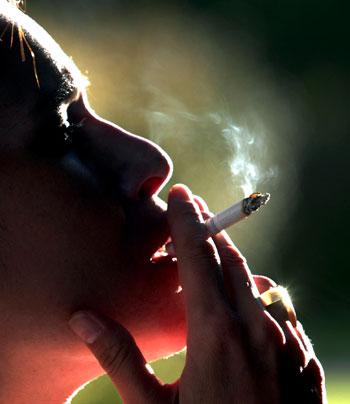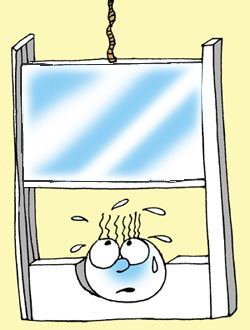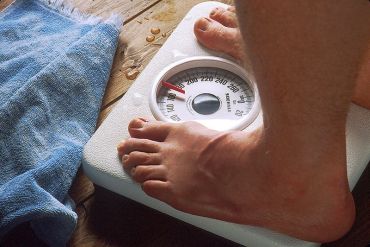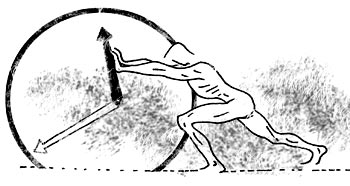 | « Back to article | Print this article |
Young and reckless: How stroke affects YOU
Abhishek Mande finds out how real this health threat is, how to identify and avoid it.
Dr Prabhakar Shetty found himself examining a 31-year-old comatose patient at the Columbia Asia Hospital in Yeshwantpur, Bengaluru.
The young man had suffered a stroke.
"The main artery going to his brain had developed blood clots," says Dr Shetty. "He had a history of previous blood clot formation in the legs and was prone to it. But his smoking habit had compounded the problem."
Young people suffering from stroke is not uncommon in India any more, says Dr Sheety.
"The threat is quite real," observes Dr Shyamal K Das from the Bangur Institute of Neurology in Kolkata.
Dr Das has conducted an extensive community-based study of stroke patients in Kolkata.
He points out that over 8 per cent of the total stroke cases he has studied affect the young -- "largely men below the age of 40 years."
Neurologist Dr Sunanda Anand, who practices in Mumbai, agrees. "It is safe to say that one in every four stroke patients I treat are under 40," she says, adding that stroke is the most common cause of morbidity today.
All of them point to the drastic lifestyle of today's youngsters -- high-pressure jobs, smoking, alcohol and a sedentary routine among other things -- as the causes.
What is a stroke?
Simply put, a stroke or a brain attack is a sudden impairment in the functioning of the brain.
A blockage in the arteries or veins or the rupturing of a blood vessel can cause such a condition.
Dr Das says, "Strokes can be ischemic, caused by the lack of blood flow to the brain due to clots, or hemorrhagic, caused by a ruptured blood vessel."
Between the two, the more common type of stroke is ischemic, when a clot can be formed in the main artery of the brain, or if a clot or an air bubble formed in another part of the body is carried through the bloodstream into the brain.
- Permanent or temporary loss of speech and/or hearing ability is one of the fallouts of a stroke.
- In extreme cases, a stroke can lead to paralysis. This means the patient can be either entirely bed-ridden or then largely dependent on other people.
- Stroke patients are also always at risk of suffering a second attack. In a way, life can never be the same after you have been hit.
Says Dr Anand, "In case of a heart attack, you can still return to normal life. But a stroke patient does not always return to normal. It can be traumatic not just for the patient but also her/his family."
What causes strokes among the young?
The causes of a stroke are many. While some of them can be genetic, others are largely self-created.
Says Dr Das: "Uncontrolled hypertension is the single most common cause for Hemorrhagic strokes. An Ischemic stroke, on the other hand, can be the result of a variety of factors:
- Hypertension remains at the top of this list too.
- Smoking comes a close second, because nicotine intake leads to hardening of the arteries and damages the lining of the blood vessels. This narrowing of the vessels and vessel walls leads to clots and results in a stroke.
- Diabetes patients are also prone to ischemic strokes (since high blood sugar causes occlusions in small vessels), as are people with Dyslipidemia or high levels of fat or cholesterol.
- According to Dr Sunanda Anand, "Strokes are not very common among young Indian women. However, this risk has increased with more of them taking to smoking or tobacco and consuming birth control pills. Young Indian women are more prone to venous strokes, or strokes that are caused by a clot in the veins, that drain the blood out of the brain (all other strokes are caused by a clot or a hemorrhage in the arteries that carry blood to the brain.) The oral contraceptive pill is one of the major contributors, as it causes blood clots in the veins," she points out.
- "Indians, with our apple-shaped bodies, are usually prone to obesity. Long work hours usually lead to a sedentary lifestyle. And an inactive life with little or no exercise and consumption of alcohol and smoking will only make things worse in the long run."
- Add to this excessive intake of junk food and lack of fruits and veggies in the diet and you have a lethal combination.
- According to some studies, sustained migraine attacks can also cause a stroke. A recent research in Iceland concludes that people suffering from a migraine problem are at a higher risk of dying from a heart or a brain attack.
How to avoid a stroke
Dr Puneet Saxena, an associate professor in the medicine department at the Sawai ManSingh Medical College, Jaipur, provides us with tips:
- Watch your weight: High levels of fat and cholesterol are not good for your body.
- Kick the butt: Smoking is one of the major reasons for stroke among young people. Besides, it isn't a healthy habit anyway.
- Exercise regularly: Sedentary lifestyle can lead to multiple complications -- for stroke or otherwise.
- Keep a check on your sleeping and eating habits: Adequate rest and a healthy diet are important.
- Regular health check-ups: After a certain age, it is crucial that one goes in for regular medical check-ups. A routine check-up can sometimes throw up a shocker.
Don't ignore these warning signs
As Dr Shyamal Das suggests, very often it isn't just the patients who ignore the warning signs -- even general practitioners miss them entirely.
If you happen to suffer from chronic headaches, a visit to a specialist is a must. Dr Das also recommends getting one's sugar and blood pressure tested immediately.
In fact, a study conducted at the University of Rochester Medical Centre in New York even suggests that the damage to tissue that occurs during a migraine attack is the same as the damage occurring in a transient ischemic attack, which starves parts of the brain of oxygen.
A transient ischemic attack or 'mini-stroke' is a classic red flag that simply must not be ignored.
According to a report published in Neurology, the scientific journal of the American Academy of Neurology, a person may suffer a mini-stroke as much as a week before the actual attack.
A 'mini-stroke' has all the symptoms of a full-blown stroke but does not last longer than a few minutes and does not cause an injury to the brain.
According to Dr Das, typical symptoms include:
- Sudden numbness or weakness in one or more parts of body
- Distortion of the facial muscles
- Speech difficulties
- Blurring of vision or double vision and
- Dizziness or difficulty walking
"A hemorrhagic stroke can be preceded by severe and persistent headache, vomiting, convulsions, loss of consciousness, paralysis on one side of the body and speech or language impairment," he says.
Time is a crucial factor in the treatment of a stroke
"F is for Face: If you find someone looking uncomfortable, ask him/her to smile. A smile is usually symmetrical. If the person is affected, one side of the lips will droop. This means that one side of the patient's body is getting paralysed.
A is for Arms: Get the person to hold out her/his arms at 90 degrees from the body. If one of the arms drops, it is time to rush him/her to hospital.
S is for Speech: Get the person to talk. Pay attention to the way s/he speaks. Slurred speech is a classic warning sign.
T is for Time: If the person exhinits one or all the above symptoms, you must rush her/him to a well-equipped hospital. Time is crucial, as in the case of a stroke, medication can prove ineffective after a certain period of time."
The human brain, as they say, is more complicated than we dare to imagine. But all it takes is a few simple precautions to keep related health scares at bay.




